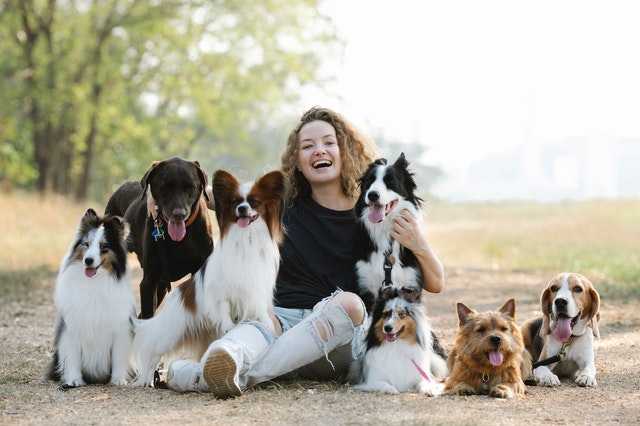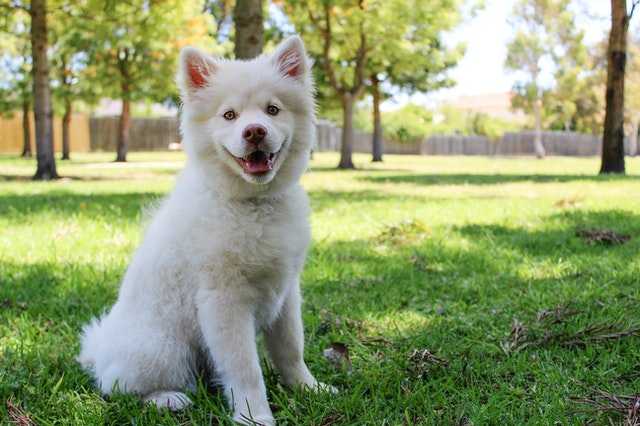How to Train a Dog to Sit In An Easy Way

It is critical to begin training in a quiet and tranquil environment, such as your living room, where there are no distractions, interruptions, or temptations, and when both you and your dog are happy and comfortable.
You'll be able to concentrate and succeed at the same time. You'll also need to provide treats for your dog, which should be something they appreciate. To begin with, you'll need a lot of rewards, so modest pleasant sweets can be a good option.
Because dogs sit naturally, teaching the "sit" command to your dog is usually pretty straightforward.
It is a method of assisting your dog in settling down and focusing on you. The training can also assist build the framework for commands like "stay" and other more complex ones. The most important thing at this point is for your dog to quickly understand the term with the activity.

Make sure you have training treats on hand before you begin. Soft, tiny, and incredibly enticing to your dog, these treats should be.
If you are going to utilize clicker training to train your dog, ensure you have your clicker at hand. The best place to practically train you’re your dog is in a private and distraction-free environment.
Quick Tips to Teach Your Dog to Sit
- While your dog is standing, place the reward in front of their nose and allow them to sniff it. Don’t hold the treat too high because it will make the dogs jump up instead of sitting.
- Move the reward up and back over your puppy's head in a slow, steady manner. When your puppy's nose points up, their back end will sink to the floor, putting them in a sitting position.
- Reward them right away with a reward and some vocal praise when they sit.
- Only use the word "sit" after your dog consistently responds to the visual hand cue.
- You should progressively reduce the amount of food you give your puppy, but it will still require periodic food rewards throughout its life.
- When your puppy sits on cue, continue to praise "good dog."
When you practice more, your puppy should be able to sit with a visual signal. Once your dog is used to sitting in exchange for a treat, try it without the treat as a motivator.
If your dog is resisting, use your hand as bait, guiding it over his head like a treat to get him to sit.
Keep an eye on your dog. This phase will be much easier if you already have a solid bond with your dog.
Reward your dog whenever he sits down on his own, even if he is unaware you are observing. You can use cuddles, toys, or food as a reward as long as your dog understands what he's done well.

Easy Steps to Make a Dog into a Sit Position
The lure method is frequently the most straightforward for most dog owners to begin with. A lure is something your dog wants, such as a treat or a toy, that is used to guide them into the desired posture.
As far as you carry out more practice, the motion you make when getting your dog into a sit will get smaller and ultimately become the hand signal for your dog's sit.
Step One: Before kick-starting the training, have a small training reward in your hand.
Step Two: The easiest way to get your dog to notice the reward, you need to place your hand with the reward very close to your dog's nose so they can smell it!
Step Three: Then gently move your hand from your dog's nose to their forehead. Most times, your dog would follow the hand with their nose, this will then force the dog backside to drop to the floor.
Step Four: When you observed that their back has struck the floor, then give the treat while they're sitting!
Step Five: Steps 1 through 5 should be repeated.
Step Six: With repetition, your dog will be able to predict what you're asking for as you begin to move the bait. When you find your dog's sits become more rapid and no longer need the complete lure, it's time to add the verbal cue and gradually phase out the hand lure.

Use the Numbers Game to Your Advantage
When experienced trainers teach a dog a new behavior, they create what is known as reward schedules. This essentially means that the number of times the dog is rewarded for correct behavior will vary.
This method of training can have a significant impact on your dog's behavior. If you enjoy playing fruit machines, gambling, or even fishing, you will understand what I mean.
You keep fishing or putting money into the slot machine because you know you're going to win, but you don't know when or how much.
This is your dog's attitude about executing any particular behavior. He knows he'll be rewarded for his efforts, but he's not sure how much or when.
This will keep him on your team. Use the numbers game in a variety of ways, such as treating your dog on an odd-numbered schedule, then switching to an even-numbered one.
Treat your dog on a 1,3,5, and so on schedule, then change and treat every 2,4 6 times, and so on. Then switch to treating on a 1,2,3 scale.
Apply the same logic when it comes to grabbing your dog's collar and keeping him close to you. Begin with 1 second, then 2 seconds, and gradually increase. Changing the time will assist your dog's patience.
Author Bio
Contributor comprises full-time and freelance writers that form an integral part of the Editorial team of Hubslides working on different stages of content writing and publishing with overall goals of enriching the readers' knowledge through research and publishing of quality content.
Article Comments
No Comments!
At present there are zero comments on this article.
Why not be the first to make a comment?
Similar Articles
Sponsor
Search Articles
Experts Column
Latest Articles
Featured Articles
Most Popular Articles












